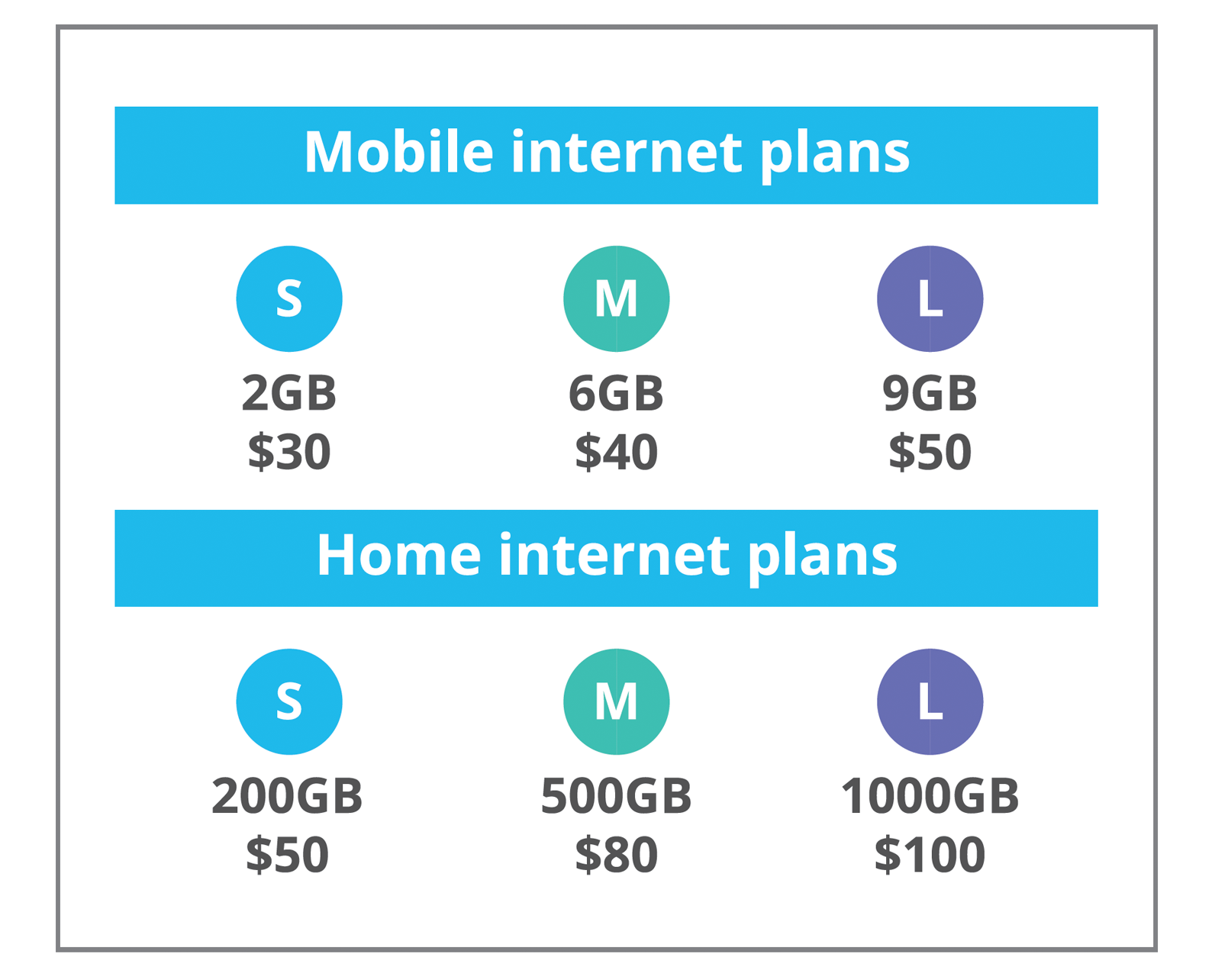Choosing a data plan
Here are some helpful tips for choosing a home internet or mobile data plan.
Your data allowance
A data plan is part of your home and mobile internet service. It includes a data allowance or quota, which is the maximum amount of data you can use in one month for the set monthly fee.
- Data is a way to measure how much you use the internet.
- Data is measured in gigabytes (GB). More data costs more and lets you do more online.
- A home internet plan usually allows more data for less cost than a mobile internet plan.
- You can be charged extra if you use more data than your monthly allowance, but not less if you use less.

Types of data plans
There are different types of data plan for home and mobile internet. A pre-paid plan means you pay each time you want more data, and a contract plan means you commit to monthly payments for an agreed time.
A contract or post-paid data plan: for home and mobile internet
Contract data plans are available for mobile data and home internet services:
- you can sign-up for 12 or 24 months, but penalty charges may apply if you stop the service before the end of the contract period
- your contract home data plan normally includes a home network box called a router
- plans can include a high-value mobile phone for a mobile internet service. The plan may also be offered without a phone, so you can use one you already own
- the data allowance is usually more generous compared to a pre-paid service
- you normally pay the monthly charge after using up the data, or when the data expires (usually one month). For that reason, contract plans are sometimes call post-paid plans.
A pre-paid data plan: for mobile internet only
A pre-paid data plan is quite common for mobile internet services:
- you don’t need to sign up for a fixed period of time, so you can stop the service or restart it whenever you wish.
- the included mobile phone may be of lower value, compared to models offered with a contract plan. The plan may also be offered without a mobile phone, so you can use a phone you already own with the data plan
- the data allowance is usually smaller than on a contract or post-paid plan
- You pay before you can use the data, which is why it is known as a pre-paid data plan.
Which data plan should I choose?
Internet providers offer different data plans at different prices. It pays to research the different providers to see who might offer the best deal for you./p>
- Finding the right home or mobile data plan depends on what you want to mostly use the internet for.
- Most plans are divided into Small, Medium, Large, and Extra Large. The size refers to how much data is included in the allowance.
- Comparison websites such as iselect.com.au and whistelout.com.au can help you find a deal on a mobile or home internet plan.
- Data plans can be purchased from an internet or mobile phone provider. You can buy one from a shop, over the internet, or by phone.
Small data plans
As the name suggests, these plans provide small amounts of data. These are the cheapest, and the best if you:
- rarely use the internet
- mostly just read simple web pages
- don't share photos or videos
- rarely watch internet TV or movies.
Medium data plans
Depending on your internet provider, a medium plan can offer a good balance between cost and data, and is best for people who:
- use the internet every day
- like to share photos with family and friends
- watch a little internet TV or one or two movies a month
- have to share data with two or three people in the household.
Large and Extra-large data plans
These are the most expensive plans and are usually aimed at people who work over the internet or do almost everything online. These plans are best if you:
- watch internet TV every day
- watch a lot of internet movies
- have to share with many people in the household
- don't want to ever worry about using up all their data!
If you are still unsure about how much data you need, you can always start with a small data plan and increase to a medium or larger data plan once you’ve had time to determine how much data you actually use. It is always easier to increase your data plan than try to change a larger plan to a smaller data plan.